Sarah Messer is a poet and a poetry professor at the University of North Carolina, Wilmington. She is also a dedicated Vision Builders Board Member and volunteer who donates several hours of her time each week to grant writing on behalf of our partner program, The Kutumb Project. To better understand the amazing program that she presents to potential grant makers, in February she accompanied Board President, Katie Kirkpatrick, on her annual planning visit to the program.* Below, Sarah shares her recollection of a day-trip they took from the Kutumb location in the Varanasi slum to the nearby village of Rameshwaram: site of the new Kutumb Village, which is under development thanks to our many generous supporters.
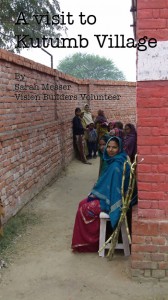 I am very grateful to have had the chance to travel to Kutumb and meet Dr. Ashish and Puja and all the Kutumb children, staff, teachers and volunteers. One of my favorite memories is our day-trip to see the progress of Kutumb Village, located in the town of Rameshwaram, about 15 kilometers from Varanasi and the Nadesar slum.
I am very grateful to have had the chance to travel to Kutumb and meet Dr. Ashish and Puja and all the Kutumb children, staff, teachers and volunteers. One of my favorite memories is our day-trip to see the progress of Kutumb Village, located in the town of Rameshwaram, about 15 kilometers from Varanasi and the Nadesar slum.
It was January in India and the air was cold and damp. We set off mid-morning–Dr. Ashish, Puja and their son, Manas, Vision Builders President, Katie Kirkpatrick, her daughter, Ryan, her Varanasi friend Geeta and me. As we approached Rameshwaram, the paved two-lane street crowded with limping dogs and beeping motorbikes narrowed into a one-lane dirt road that wound through the village. We passed stucco houses with corrugated tin roofs sitting right next to the road. As we moved into a more rural area, we passed a cow, then a calf tethered in a yard. There were dung patties spread on the sides of the houses to dry or arranged in patterns on the ground like fish scales. And everywhere the smell of dung burning, which smelled like earth burning. The threads of white smoke braided into the constant noise of accelerating scooters, of radios playing Indian music, and the sounds of unfamiliar birds. We passed water buffalos, bicycles, bamboo, fences made of tied up sticks, laundry hanging between trees.
The road narrowed even more as it exited the village center and entered fields, green and squared off—the road seemed to float above them. Two cars could not pass side by side. Yet we passed some people on bicycles, women walking through muted sounds of villagers talking between houses, someone banging sticks. In the distance the trees were scattered in clumps between the bright green fields.
Driving along the (now country) road I could see, through the scrubby trees, the occasional piece of walled-off land. A perfect and solid newly built brick wall, ten feet high or so. Kutumb Village is also one of these—a squared off place with a big brick wall and one entrance. The wall is topped by a curled strand of barbed wire. “Site for Kutumb Village,” the sign said. And just like that, we were there.
As we all stepped out of the car, I could see across the wide expanse of the campus some men smashing up bricks. They were working on another building project—the flooring and base of a building—over which they would then pour cement. A tractor with tinsel ribbons hanging along its cab sat empty next to a giant pile of dirt. One worker holding a shovel stood waist-deep in a hole out of which a web of tunnels led, the beginning of a foundation. A small grassy pond sat in the middle of the complex, and a rectangular garden of zinnias had been planted over by the recently opened health clinic.
Normally Dr. Ashish visited the clinic once a week on Sundays; today was Saturday. Still, more than 30 people found out about the date change and traveled to see him. Later he told me that 60 or more people usually visit the clinic each Sunday. “So,” he said, “Today is not typical.”
How did they know to come? I asked.
Word of mouth. Word reached 50 km away for one family: a woman with her four year old boy had traveled this far to stay with her mother in the neighboring village in hopes of seeing Dr. Ashish. Many others also traveled great distances because the Kutumb Village clinic is the only source of reliable free medical care in the area.
Dr. Ashish and his assistant, Javed, sat in the small square room at a simple desk. The clinic was spare and swept clean a makeshift examining table with a stool for patients to step up on, a bathroom scale, a metal cabinet containing boxes of donated medicines, ayurvedic mostly. A small shrine sat on a shelf recessed into the wall next to Dr. Ashish’s desk. The altar contained an image of the goddess, Saraswati riding a swan above a row of small offering bowls.
An elegant man with his head wrapped in a mustard-colored scarf stood at the doorway to ask patients’ names and their ailments, and give them a numbered chip the size of a button on a woman’s winter coat. Then they waited on the benches, against the wall, or next to the door with the morning glory vine winding up the side until their number was called.
When the patient’s number was called, they entered immediately and sat in a chair facing Dr. Ashish. He asked them many questions about how they were feeling. He took their blood pressure. He asked them to stand on the bathroom scale.
Most who attended the clinic that day were women; they arrived wearing brightly colored saris wrapped in heavier wool blankets, having walked without carrying much food or water. When they entered the clinic, their feet were bare, the soles painted red, adorned with toe-rings, shoes left outside on the folded burlap bag that served as a doormat. They entered with their arms thick with marriage bracelets, holding their number.
Their list of maladies: hypertension, sinusitis, headcold, ear infection, sore throat, jaundice, arthritis, asthma. The most common ailment of Indian women, Dr. Ashish told me later, is severe iron deficiency-anemia. It’s a cultural problem, he said; the women always eat last, after the men and children, and when people are poor, sometimes there’s no food left for them, or nothing of any nutritional value. And so, the women suffer and are tired all the time from being anemic, yet they still continue to work most of the day and night.
Two old women entered together in their gold bracelets and rings, their bird-like shoulders. One had a very bad ear infection; the other hypertension—her husband had died the week before. They followed each other in the door, one standing behind the other as if a shadow. Then one moved to the chair beside Javed as he counted out the medicines, cut off doses with scissors and wrote the script, placing the various pills into an envelope. The woman sat and put her hands together like a steeple, each finger touching its mate lightly. As if she was sleeping or moving slowly through a dream filled with honey. She rested her forehead against the roof of her hands, while her friend leaned into the stethoscope and Dr. Ashish spoke in his clear and proper accent, softly as if the whole room were falling asleep, he leaned into both of them asking what was wrong.
What was wrong, I would learn later, was probably more than just a physical ailment. Because becoming a widow in India changes everything about one’s former life. In many cases, when the husband dies, the widow’s children toss her out. Widows are considered bad luck, a bad omen; they are not invited to weddings, not allowed to hold infants, or to attend celebrations. The mortality rate is 86 percent higher among elderly widows in comparison to married women of the same age group. As widows, they are living what some call “sati” or the practice of burning a widow alive with her husband’s corpse; except they are burning metaphorically, dead to their family and former life. They shave their heads, wear only white, strip themselves of any jewelry or color. They eat only one meal a day. Widows are sometimes called “pram” which means “creature” because she was only human in relationship with her husband—he elevated her from a creature to a human—but after his death she becomes a creature again, referred to as “it” rather than “she.” When her husband dies, she is supposed to give up all earthly pleasures, to be “devoted to her husband in life and death.” As it says in the famous Hindu text, Skanda Purana, widows are “more inauspicious than all other inauspicious things.”
All of these reasons, mixed with the sheer grief of losing a spouse, seemed to be the cause of the widow’s hypertension. Dr. Ashish told her that she should rest and try and eat more than one meal a day.
More women came into the clinic, some with children, some without. Dr. Ashish asked them all to sit by him in a chair as he took their blood-pressure, listened to them breathe with his stethoscope. He gently supported their arm, leading them onto the scale. It went on like this for two or three hours.
The woman who walked 50 km carrying her four-year-old child also carried an X-ray with her when she entered the clinic. She arrived with the child’s grandmother who wore a wrinkled face and a bright sari. The mother handed the child over to the grandmother, then pulled the X-ray out of her bag and handed it to Dr. Ashish. Against the light of the window, Dr. Ashish stared at the image of the child’s spine. The boy wore thick cotton pants. Someone had put his hair into pigtails so that he resembled a girl. The child was four years old but was the size of a two-year-old. It occurred to me that this mother must have carried her child the entire 50 km. He couldn’t walk. Someone always had to carry him. Ashish lifted him onto the waist-high table and examined him, moving his legs forward and back, gently rotating them. Then he held the child’s arms, made him stand up, stretching the boy’s arms out and balancing him as he swayed back and forth. The boy’s body seemed floppy as if made of rubber. He whimpered and collapsed into a squat, sat down.
Katie then joined Dr. Ashish and together they lifted the boy off the table and encouraged him to walk, holding him by the arms. The boy’s legs went limp but he managed to take a few steps. Dr. Ashish and Katie encouraged him. What the boy needs, Dr. Ashish said, is physical therapy. At one point he had weak back, a gap between two vertebrae, but it wasn’t causing him to be paralyzed, Dr. Ashish said, what he needed was exercise. His mother probably tied him to her while she worked, or sat him in a corner. She carried him everywhere, said Ashish. And so there was no need for him to gain strength and over-come his weakness. Dr. Ashish gave the mother a series of exercises she must do with the child every day.
Is there any difference, I asked him, between these people in Rameshwaram and those in the Nasdesar slum? I asked mainly because I have never watched him care for people in the slum, though I have seen his tiny office, which is even smaller than the room we were in at Rameshwaram. Yes, he said, there is a big difference. Namely, he said, it’s the follow up.
“I know I will see all of these people again,” he said, “they will follow my directions and take their medicine when they are supposed to. If I tell them to come back in two weeks or a month, they will come back.”
And the people in the slum? “Not so much. No follow-up,” he said. According to Dr. Ashish, the patients who visit the slum clinic only want a one-time fix. Most of the people he saw never came back. People in the country are still very poor he said, but it’s different. Yet, regardless of this difference, Dr. Ashish is committed to helping all patients–in the slum or in the countryside.
The countryside is not without its obstacles. It turns out that the villagers didn’t like the wall. Even though it was common in the area, they didn’t like it. And often village elders told the caretakers different information, perhaps their opinions verses what Dr. Ashish had decided to do. “We have to work hard to have good local relations,” he said. They had to watch over everything. And no one is more watchful than the locals. It’s a benefit to have them think they are responsible, Dr. Ashish said, always positive.
Ryan, Geeta and I decided to go for a little walk down the road to see where the locals lived. Outside Kutumb Village’s main gate, the road moved one way towards squared off green fields and trees; the other way back towards the village. When we went this way we immediately came upon a neighboring house with a car in a square dirt yard, a cow and a calf tethered, lying down and chewing their cuds. This way there seemed always to be a dog standing in the road, its back legs hunched, its body worn out by fleas. This is the way the women walked home, past the “Site of Kutumb Village” sign and these dogs; back through the winding village with all its small fires and deep rutted roads raised above wet fields, dung spread on the sides of houses to dry. There were also thatched three-sided buildings that sat like garages with their doors wide open. At night, small fires or candles would be lit in the openings, making every house glow from the inside like a giant lamp.
But in the other direction, away from the village, there were very few buildings at all, only walls and squared off open land. Here Kutumb recently bought another plot of land also fenced by brick but unmade and swampy, some kind of thick grasses planted there as a crop and the wild mustard grown up neck-high in the back acre. Beyond this, another, higher road where a boy wearing a bright red shirt pedaled by on his bike. He straightened his knees on the pedals when he saw us, stood up and coasted. This is where Dr. Ashish will eventually plant a vegetable garden to feed the children of Kutumb Village. Farming and gardening vocational training is also in the works – the students will learn how to read and write in the classrooms, but they will also gain important farming and agricultural skills to assist them in their future lives.
As we walked back to the clinic, the last patients were just leaving. The man in the mustard-colored scarf was escorting them out the door. Puja had brought some chairs into the clinic and a small table that seemed to have appeared out of nowhere. She carried in two large thermoses of the best tea I had ever tasted – warm and spiced with milk and sugar. We all sat very close to each other around the small table – their son, Manas, back from playing in the sand pile, squirmed on Dr. Ashish’s lap – and we drank tea out of small paper cups and ate biscuits called “Nice Time.”
And it was. As I looked out the window driving away, I already missed it. And I thought about how nice it would be when all the Kutumb children will be living here. And how nice it will be to some day return.
###




 I was watching other tourists deal with this and most people would just continue walking, making no eye contact… acting as if no one was begging in front of them. That is one way that people deal with this issue, but as a parent I couldn’t really say to my seven-year old daughter ‘Oh, pretend you don’t care about these begging children.
I was watching other tourists deal with this and most people would just continue walking, making no eye contact… acting as if no one was begging in front of them. That is one way that people deal with this issue, but as a parent I couldn’t really say to my seven-year old daughter ‘Oh, pretend you don’t care about these begging children.  Don’t look.’ That’s the strategy that a lot of people who go there, especially as tourists, adopt in order to deal with these masses of begging children.
Don’t look.’ That’s the strategy that a lot of people who go there, especially as tourists, adopt in order to deal with these masses of begging children.
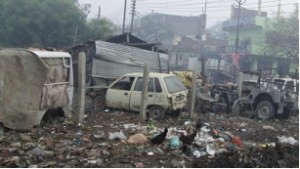 So there’s just burning trash everywhere. There’s broken metal and pieces of glass – it’s just really shocking. I have taken two of my friends, who work for Vision Builders, to Varanasi on my annual trip. And, as much as I’ve told them about the area where the project is, they still get off the plane and say, ‘I had no idea.
So there’s just burning trash everywhere. There’s broken metal and pieces of glass – it’s just really shocking. I have taken two of my friends, who work for Vision Builders, to Varanasi on my annual trip. And, as much as I’ve told them about the area where the project is, they still get off the plane and say, ‘I had no idea. 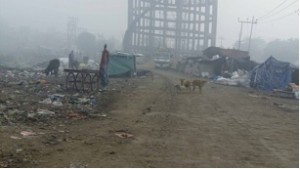 Oh my gosh, I had no idea’. From a Western perspective, it is mind-boggling. The size of the slum area, and the sheer number of people living in these conditions are enormous. So I don’t think it’s apathy, because most people who see those conditions would want to do something to help, but there’s so many challenges.
Oh my gosh, I had no idea’. From a Western perspective, it is mind-boggling. The size of the slum area, and the sheer number of people living in these conditions are enormous. So I don’t think it’s apathy, because most people who see those conditions would want to do something to help, but there’s so many challenges. “Really, what works is food, education, healthcare and women’s empowerment. Women’s empowerment is an important factor in these circumstances because if you teach a woman to read she will teach her children. If you teach a man to read, he may be able to get a little better job, but he won’t teach his children. I don’t quite understand it myself, but I’ve been reading about this a
“Really, what works is food, education, healthcare and women’s empowerment. Women’s empowerment is an important factor in these circumstances because if you teach a woman to read she will teach her children. If you teach a man to read, he may be able to get a little better job, but he won’t teach his children. I don’t quite understand it myself, but I’ve been reading about this a  lot. I see the fathers in this area, and most of them are very caring and involved with their children. But statistic shows that empowering women is what makes an impact.
lot. I see the fathers in this area, and most of them are very caring and involved with their children. But statistic shows that empowering women is what makes an impact. and how they can set up a bank account. Very basic things, to us, but this is the beginning of what makes it possible for them to start very small businesses – making and selling teddy bears, for example, in the open market. With these basic skills they can make even just a small amount of money to support their families. He [Dr. Ashish] has all kinds of programs for women, teaching them to read if
and how they can set up a bank account. Very basic things, to us, but this is the beginning of what makes it possible for them to start very small businesses – making and selling teddy bears, for example, in the open market. With these basic skills they can make even just a small amount of money to support their families. He [Dr. Ashish] has all kinds of programs for women, teaching them to read if  they’re interested in reading, teaching them to cut hair… Most of the women, prior to attending his programs, have never left the slum area where they live. They’ve never gone outside of it because of fear, so their lives are very small. And by having these women’s empowerment programs, it opens up their lives and also their possibilities.”
they’re interested in reading, teaching them to cut hair… Most of the women, prior to attending his programs, have never left the slum area where they live. They’ve never gone outside of it because of fear, so their lives are very small. And by having these women’s empowerment programs, it opens up their lives and also their possibilities.”






 I am very grateful to have had the chance to travel to Kutumb and meet Dr. Ashish and Puja and all the Kutumb children, staff, teachers and volunteers. One of my favorite memories is our day-trip to see the progress of Kutumb Village, located in the town of Rameshwaram, about 15 kilometers from Varanasi and the Nadesar slum.
I am very grateful to have had the chance to travel to Kutumb and meet Dr. Ashish and Puja and all the Kutumb children, staff, teachers and volunteers. One of my favorite memories is our day-trip to see the progress of Kutumb Village, located in the town of Rameshwaram, about 15 kilometers from Varanasi and the Nadesar slum.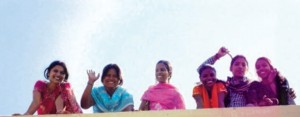
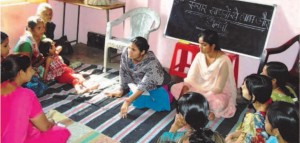 “Rural women are active agents of economic and social change and environmental protection who are, in many ways and to various degrees, constrained in their roles as farmers, producers, investors, caregivers and consumers. They play crucial roles ensuring food and nutrition security, eradicating rural poverty and improving the well-being of their families yet continue to face serious challenges as a result of gender-based stereotypes and discrimination that deny them equitable access to opportunities, resources, assets and services.”
“Rural women are active agents of economic and social change and environmental protection who are, in many ways and to various degrees, constrained in their roles as farmers, producers, investors, caregivers and consumers. They play crucial roles ensuring food and nutrition security, eradicating rural poverty and improving the well-being of their families yet continue to face serious challenges as a result of gender-based stereotypes and discrimination that deny them equitable access to opportunities, resources, assets and services.”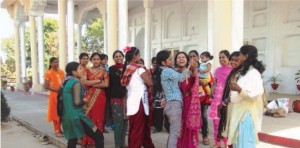 ion Builders is honored and happy to help support the Kutumb project, and the work the Kutumb Project does EVERY DAY to empower women and girls in many core areas – such as access to education, health care, access to resources, and food security.
ion Builders is honored and happy to help support the Kutumb project, and the work the Kutumb Project does EVERY DAY to empower women and girls in many core areas – such as access to education, health care, access to resources, and food security. 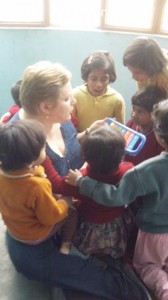
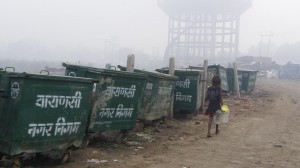
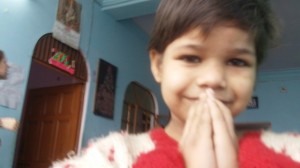

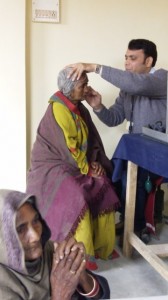


 Yesterday was sunny and beautiful, and we had a wonderful turnout for our 5th Annual 5K event. The Vision Builders 5k is building up an excellent reputation as a REALLY FUN family event that supports a great cause. ‘Kids Helping Kids’ -and- the value of family, are two of the main themes of the event…not to mention the shear fun of running a good race or having a fun walk on a beautiful tree-lined course!
Yesterday was sunny and beautiful, and we had a wonderful turnout for our 5th Annual 5K event. The Vision Builders 5k is building up an excellent reputation as a REALLY FUN family event that supports a great cause. ‘Kids Helping Kids’ -and- the value of family, are two of the main themes of the event…not to mention the shear fun of running a good race or having a fun walk on a beautiful tree-lined course! Vision Builders’ Board President and Co-Founder Katie Kirkpatrick gave all the participants and volunteers a warm thank you for their participation and support. This year we were able to raise almost $30,000 for the development of Kutumb Village.
Vision Builders’ Board President and Co-Founder Katie Kirkpatrick gave all the participants and volunteers a warm thank you for their participation and support. This year we were able to raise almost $30,000 for the development of Kutumb Village.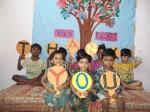 After the race, participants enjoyed a free pancake breakfast and kid’s enjoyed a Carnival with games, and craft activities. There was lots of smiling and laughing, and a true feeling of community, family, and generosity at the event; everyone coming together to help make the world a more joyful and safe place for kids – both here in Ann Arbor and across the globe to Varanasi, India!
After the race, participants enjoyed a free pancake breakfast and kid’s enjoyed a Carnival with games, and craft activities. There was lots of smiling and laughing, and a true feeling of community, family, and generosity at the event; everyone coming together to help make the world a more joyful and safe place for kids – both here in Ann Arbor and across the globe to Varanasi, India! 